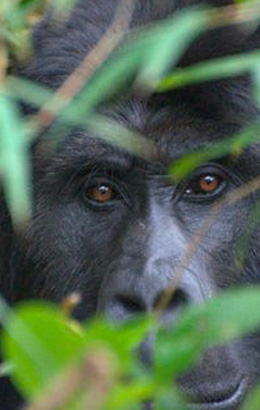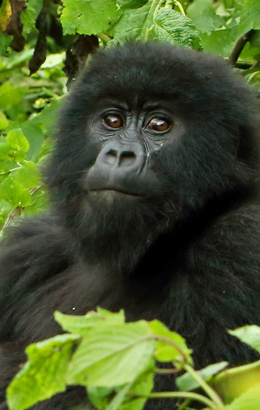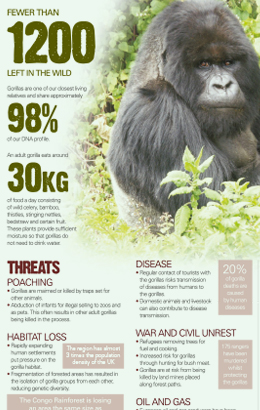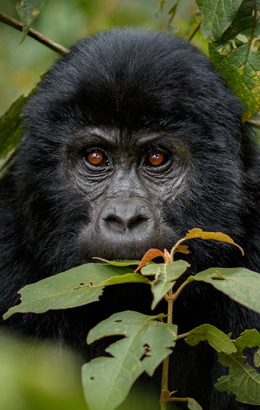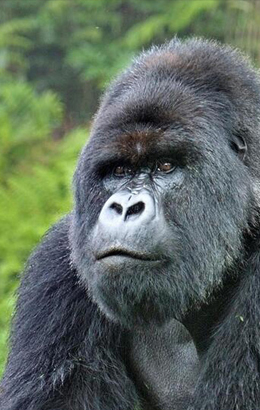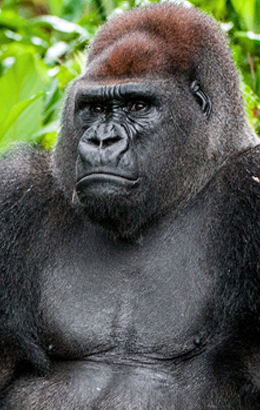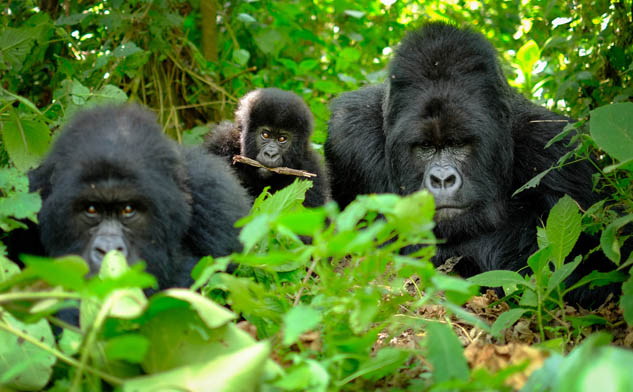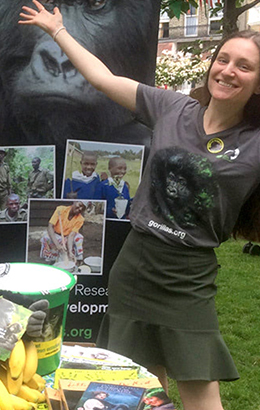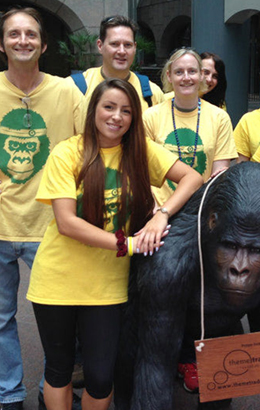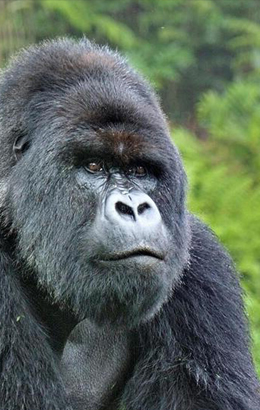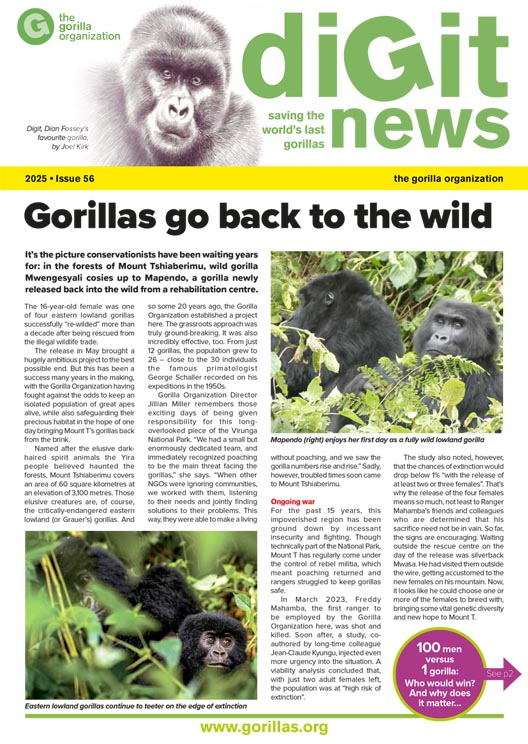The conflict in eastern Democratic Republic of Congo has shaped life in this region for decades. Armed groups have operated…
Virunga National Park at 100
Extract from our Autumn newsletter – Digit News
Africa’s oldest National Park may not be its most famous nor indeed its most-visited. But for mountain gorillas, it has always been the most important.
And now, 100 years after its creation, the Virunga National Park remains at the centre of efforts to keep them from extinction.
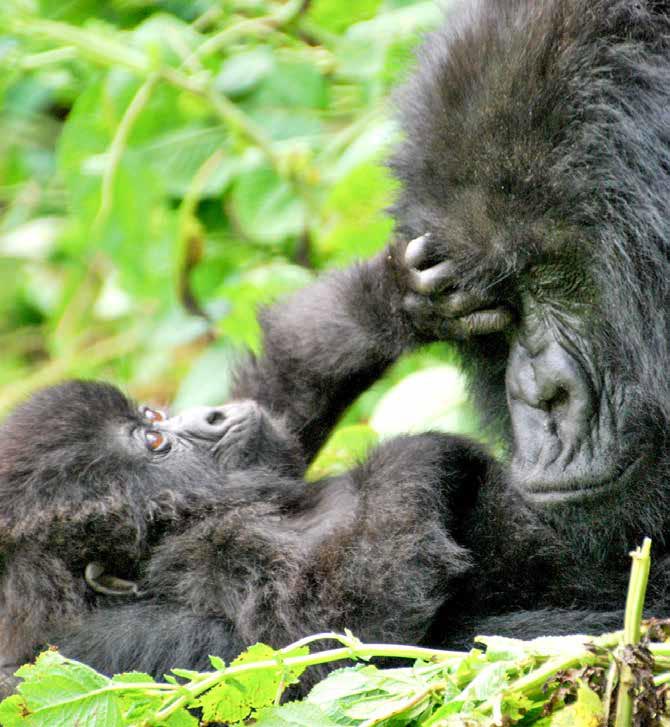
In April 1925 King Albert, influenced by a visit to the USA, decided to create a vast natural refuge in what was then the Belgian Congo. The King Albert Park was to be a place for scientific exploration and discovery. Moreover, it was designed to be a refuge for the gorillas that had captured the imagination of imperialist explorers.
Active volcanoes
The redrawing of the boundaries to Lake Edward increased its area from 25,000 to 190,000 hectares, and the inclusion of Mount Nyiragongo and Mount Nyamuragira meant it became home to Africa’s two most active volcanoes. Then, in 1962, the section in DR Congo became the Parc National de Virunga; the smaller Rwandan section Parc National des Volcans.
But while the names and boundaries may have changed, the park has remained a place of unrivalled biodiversity. It’s a landscape of wide savannas, marshes and tropical forest. And it’s home to half of all the animal species in Africa.
The mountain gorillas living on the slopes of extinct volcanoes in the Mikeno Sector, represent one of the great conservation success stories. The Park is now home to one third of the 1,063 individuals left. Much of this is down to the tireless efforts of the rangers. From their Rumangabo headquarters, they have grown into a professional, motivated force, risking their lives to keep gorillas safe.
Collective success
Gorilla Organization Director Jillian Miller has seen the Park emerge as a conservation stronghold. “This is one of the natural wonders of the world, and the majestic mountain gorillas are its true icons. Our collective success in bringing them back from being lost for good has been remarkable. But the threats they face have not gone away – in fact they are now as bad as ever.”
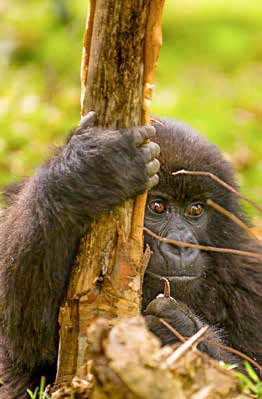
The Virunga National Park is infamous for being as troubled as it is beautiful. Its resources have been fiercely contested and exploited, with gorillas caught in the middle. In the 1990s, war in Rwanda triggered a humanitarian crisis that continues to this day. One million displaced people are now camped outside the Park’s boundaries, with 600 tons of trees cut down each year for fuel. Gangs fight for control of the illegal charcoal trade, as well as mineral resources.
More recently, the taking of Goma city by the M23 group has led to even more uncertainty. The Park is now a UNESCO Heritage Site in danger, its gorillas perhaps more vulnerable than ever. But if 100 years of history have shown anything, it’s that a strong ranger force to confront immediate dangers and community conservation work to address the underlying causes of those threats, is the only way to protect this precious habitat and ensure its gorillas are around for another century and more.
An alternative approach to conservation
For many of the indigenous peoples of DR Congo, the Virunga National Park retains its colonial essence. In 1925, thousands were expelled to establish the natural reserve.
And the few hundred who were allowed to remain were regarded as an example of local wildlife rather than real people. Times have changed. But communities still strongly feel that their lives and futures are being controlled from afar. Decisions on who can enter or control the Park are made by governments in Europe or by NGOs. However, 600km away, the Walikale Community Gorilla Reserve shows that a different approach to conservation is not only possible, but also much-needed.
In 2016, the Government changed the law to allow locals to take control of forest concessions. And so in Walikale, a small team funded by the Gorilla Organization works hand-in-hand with local communities to protect 5,000 eastern lowland gorillas and their precious habitat. The communities have an active stake in conservation, laying the foundations for more sustainable long-term success.
To see the full edition of Digit News download here
Make a difference – help today!
More News

Why the conflict in eastern DRC is so dangerous for gorillas
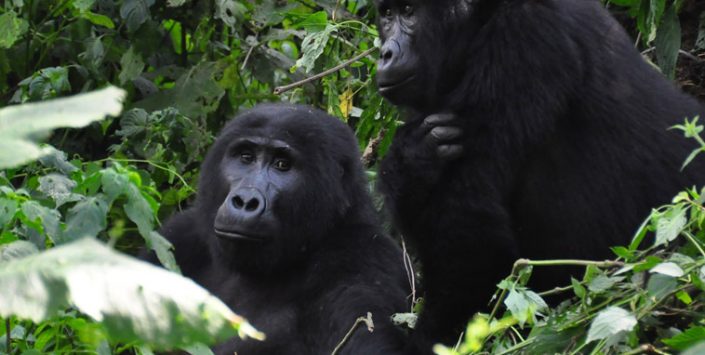
Gorillas stay stable, but remain “Critically-Endangered”
Despite the recent and ongoing insecurity in eastern DR Congo, the status of gorillas in the wild remains largely stable.…
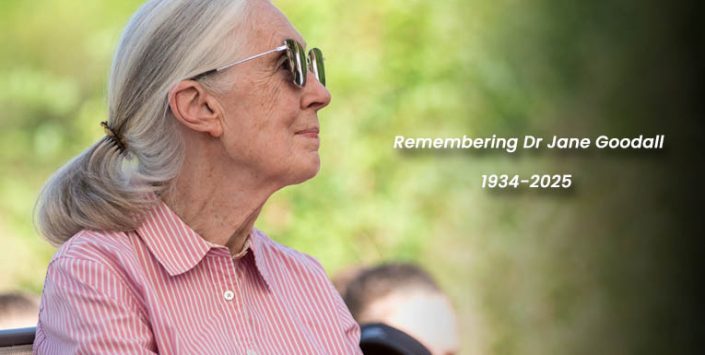
Remembering Jane Goodall – a true friend of the gorillas
Dr Jane Goodall, the visionary primatologist and tireless environmental campaigner, has died at the age of 91. Her groundbreaking work…
